Quarter Outer Panel Sectioning XUV
Removal Procedure
Caution: Refer to Approved Equipment for Collision Repair Caution in the Preface section.

- Remove
all related panels and components including the lower quarter filler.
- Restore as much of the damage as possible to the factory specifications.
- Note the location and remove the following materials, as necessary:
| • | The anti-corrosion materials |
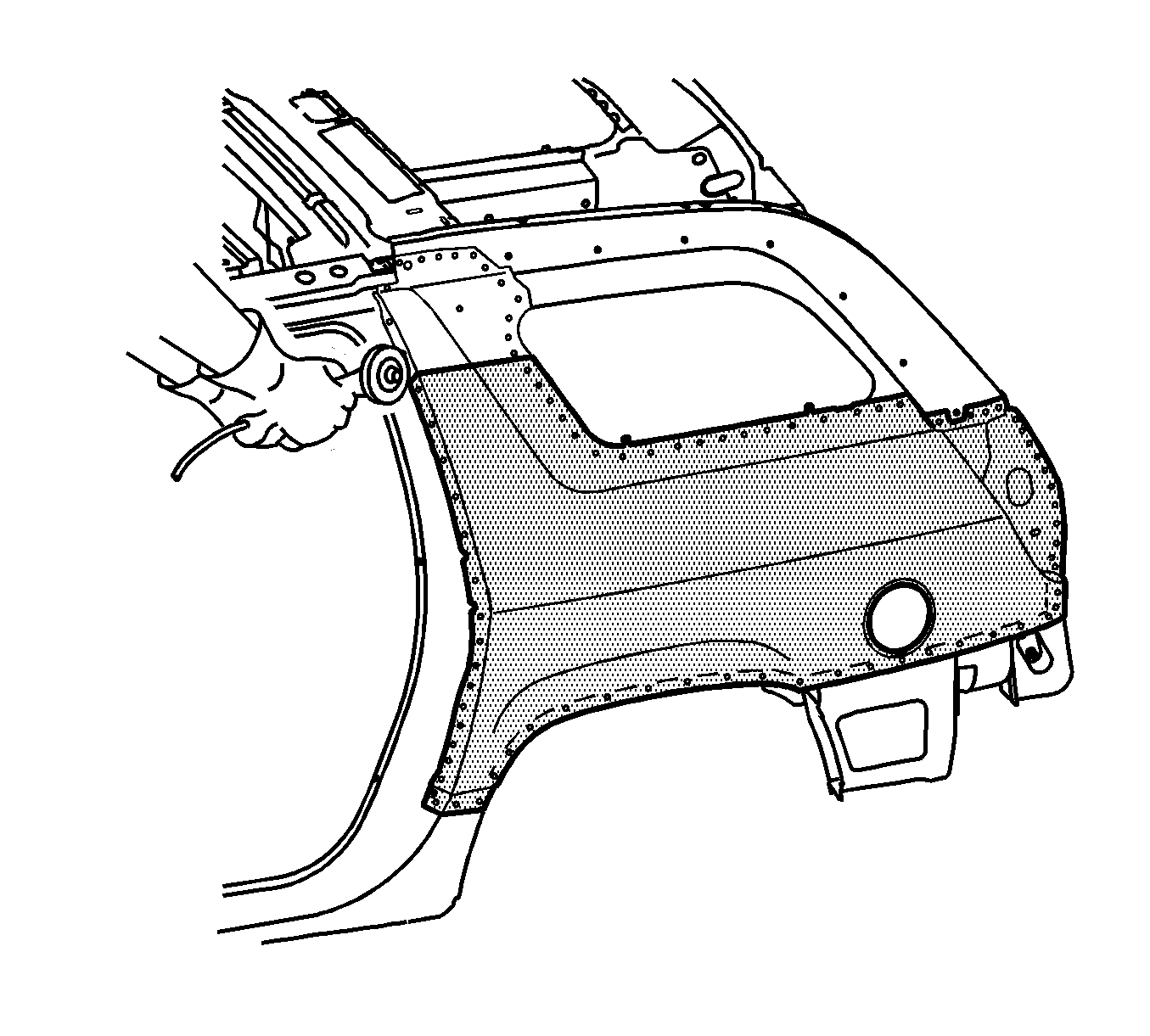
Important: Do not damage any of the inner panels or the reinforcements.
- Cut the panel where sectioning is to be performed.
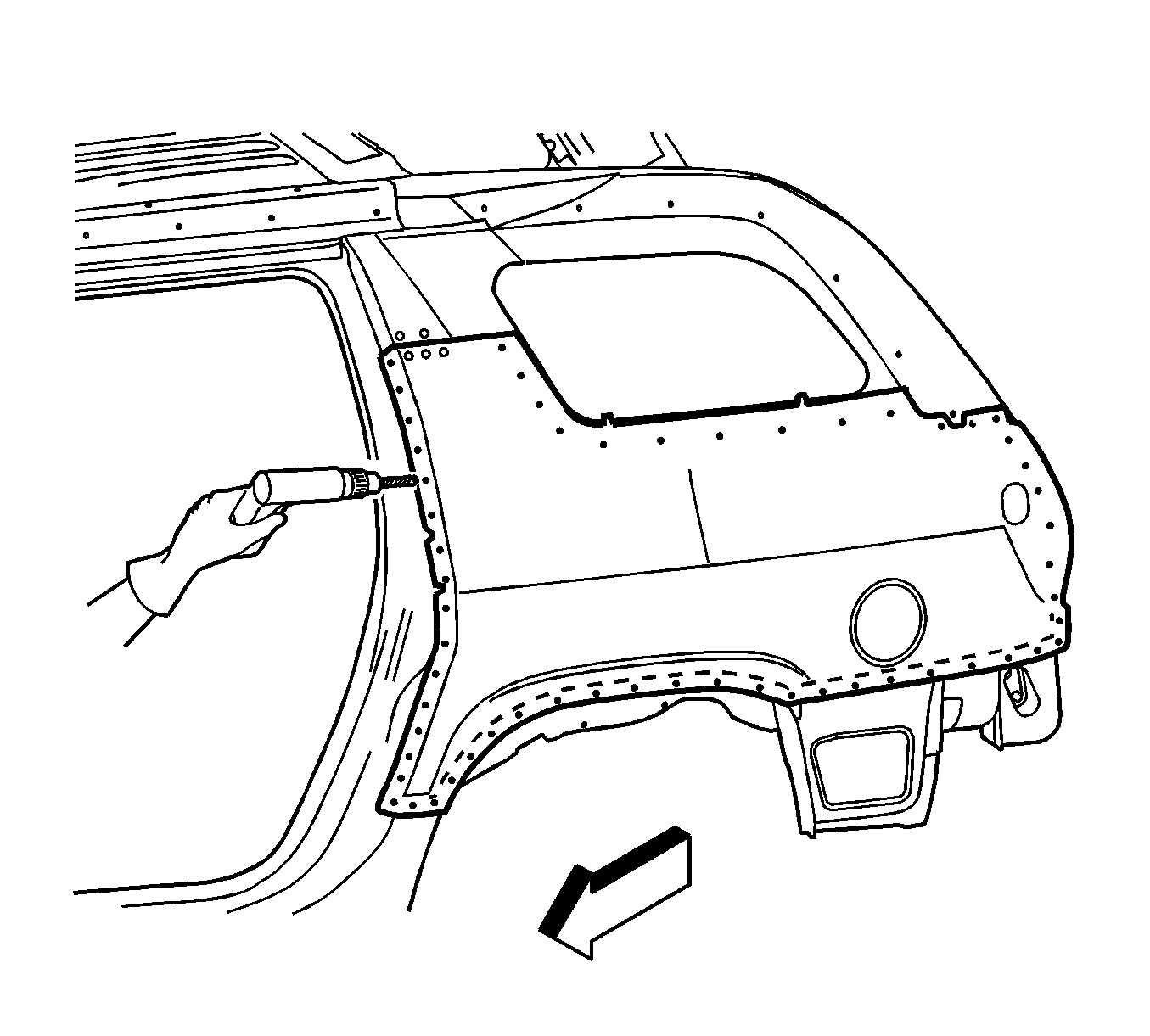
- Locate, and drill out all of the factory
welds. Note the number and location of the welds for the installation of the service
part.
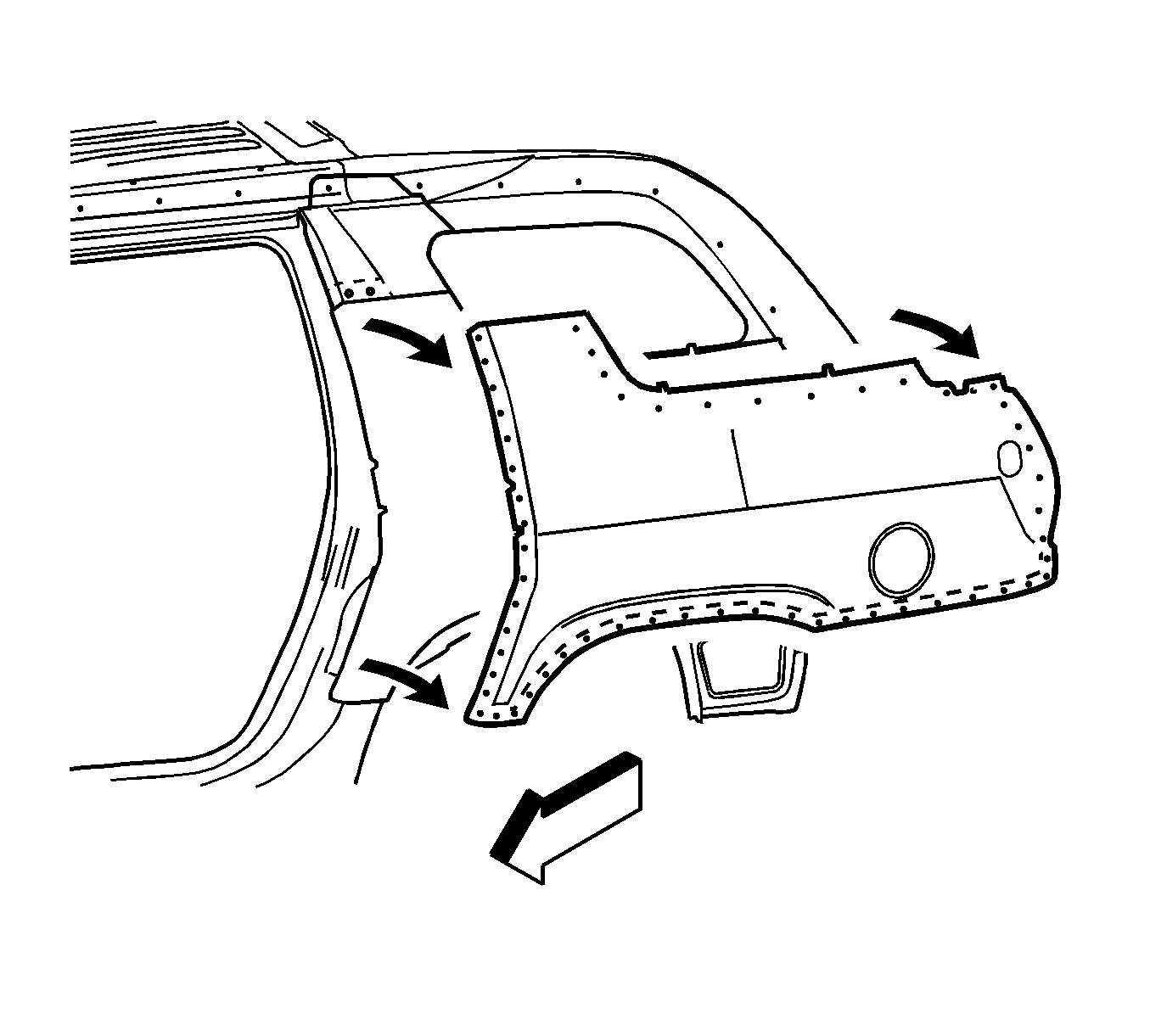
- Remove the damaged quarter panel.
Installation Procedure
The quarter panel may be serviced as a complete panel in the event the roof
panel is to be replaced. Sectioning procedures have been developed to simplify the
repair. The service part can be replaced by making sectioning cuts at the window pillars.

- Cut the replacement quarter panel in corresponding
locations to fit the remaining original panel. The sectioning joint should be trimmed
to allow 1.5 times the metal thickness at the sectioning joint.

- Create a 50 mm (2 in) (a)
backing plate from the unused portion of the service part. Trim the backing plate
as necessary to fit behind the sectioning joint.

- Drill 8 mm (0.3 in) plug weld
holes along the sectioning cut on the remaining original part. Locate these holes
13 mm (0.5 in) from the edge and spaced 40 mm (1.6 in)
apart.
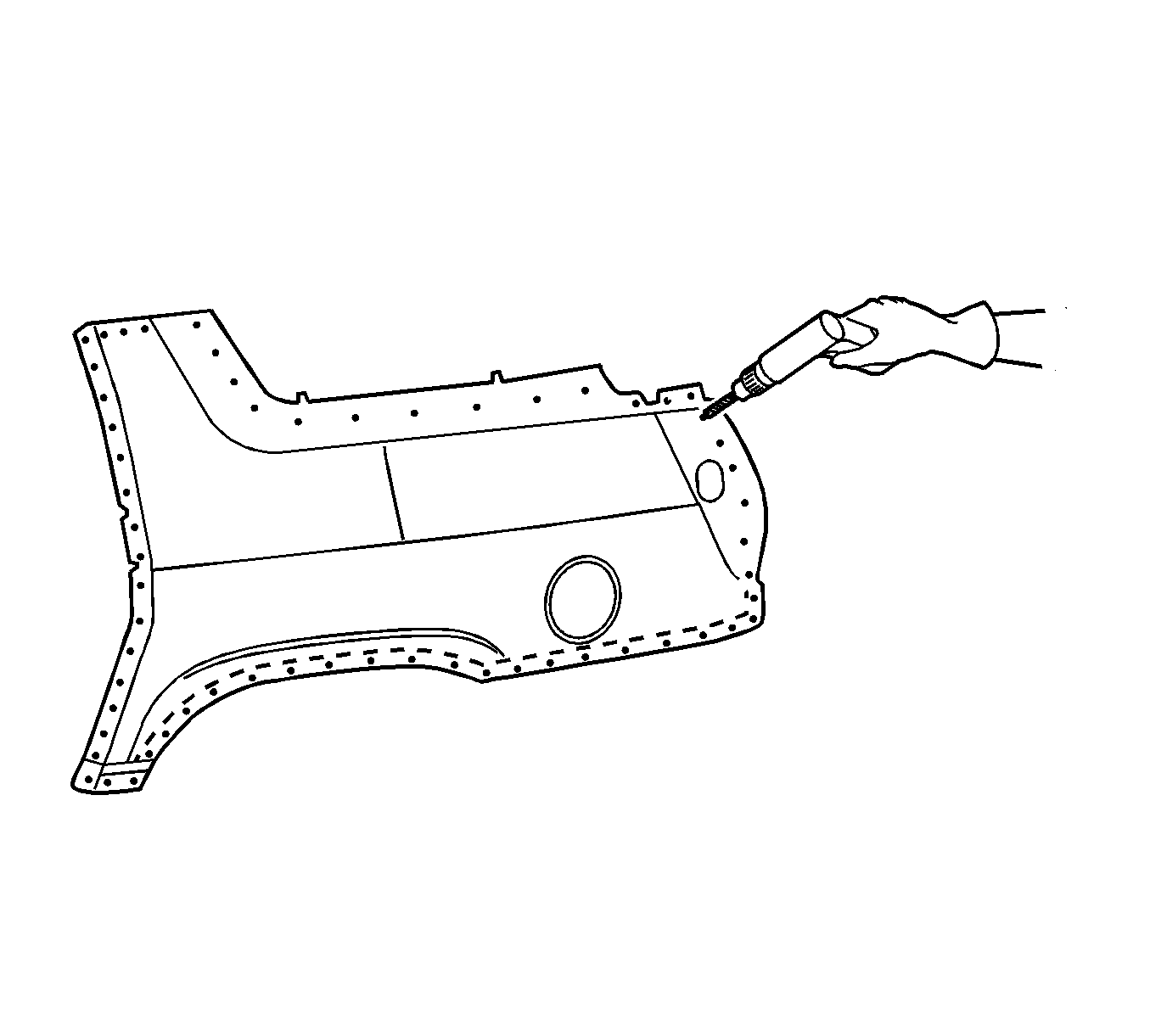
Important: In any area with excessive damage, space the plug weld holes every 40 mm
(1½ in) apart.
- Drill 8 mm (0.3 in) plug weld holes in the service part as necessary
in the locations noted from the original panel and along the sectioning cut.
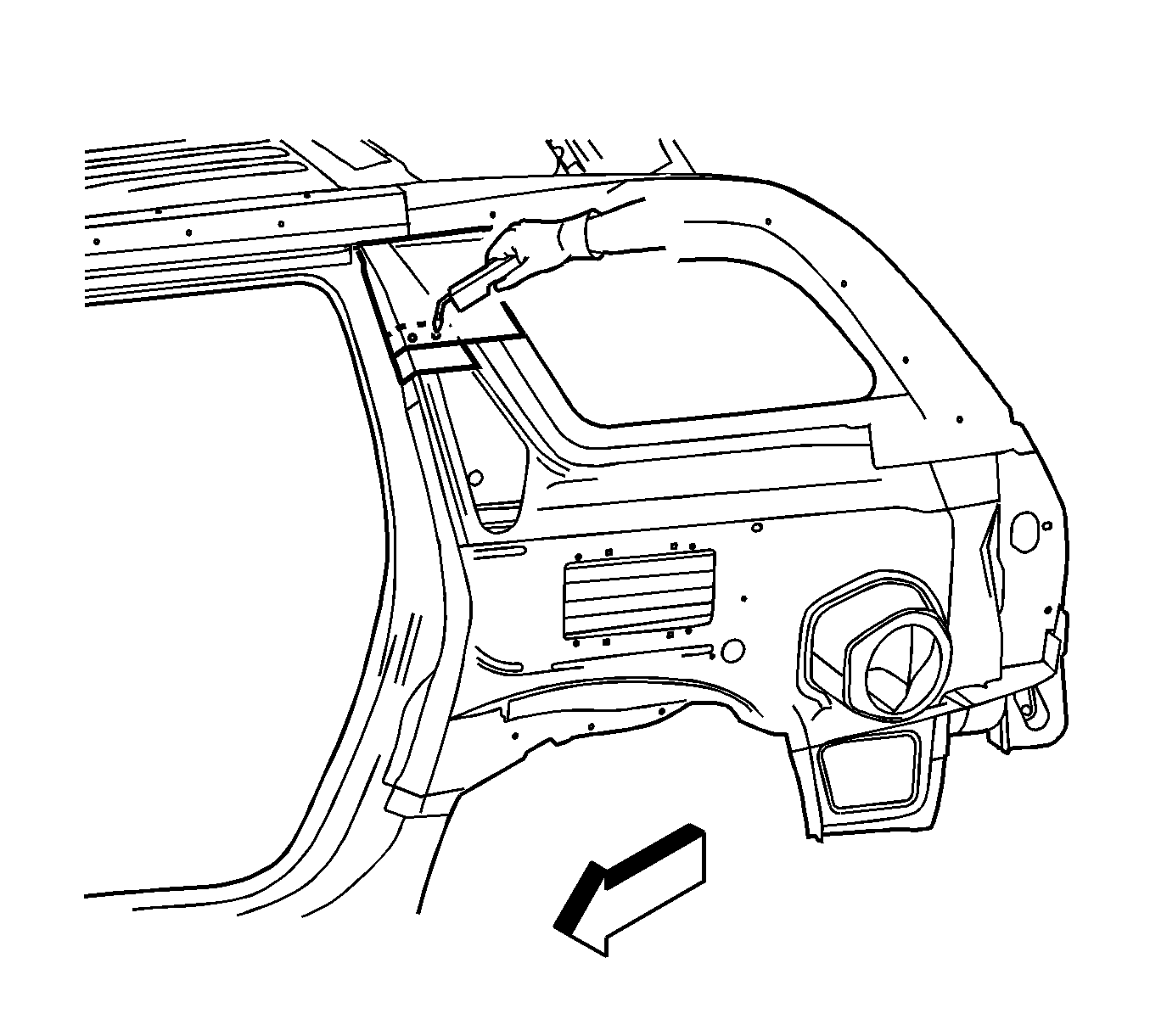
- Prepare all of the mating surfaces as necessary.
- Apply 3M Weld-Thru Coating P/N 05916 or equivalent to all mating surfaces.
- Fit the backing plate halfway into the sectioning joint, clamp and plug
weld to the vehicle.
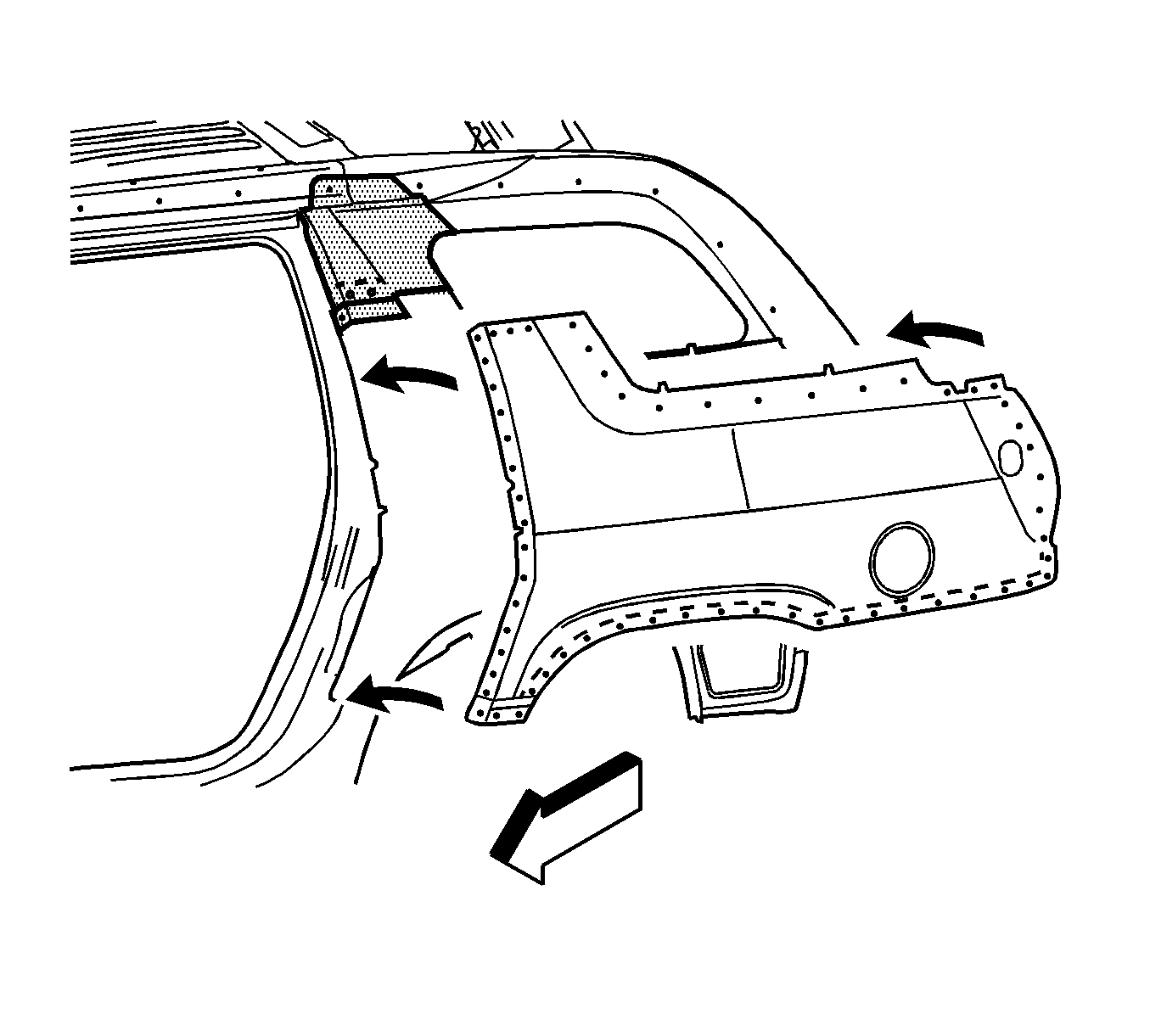
- Position the quarter panel to the vehicle.
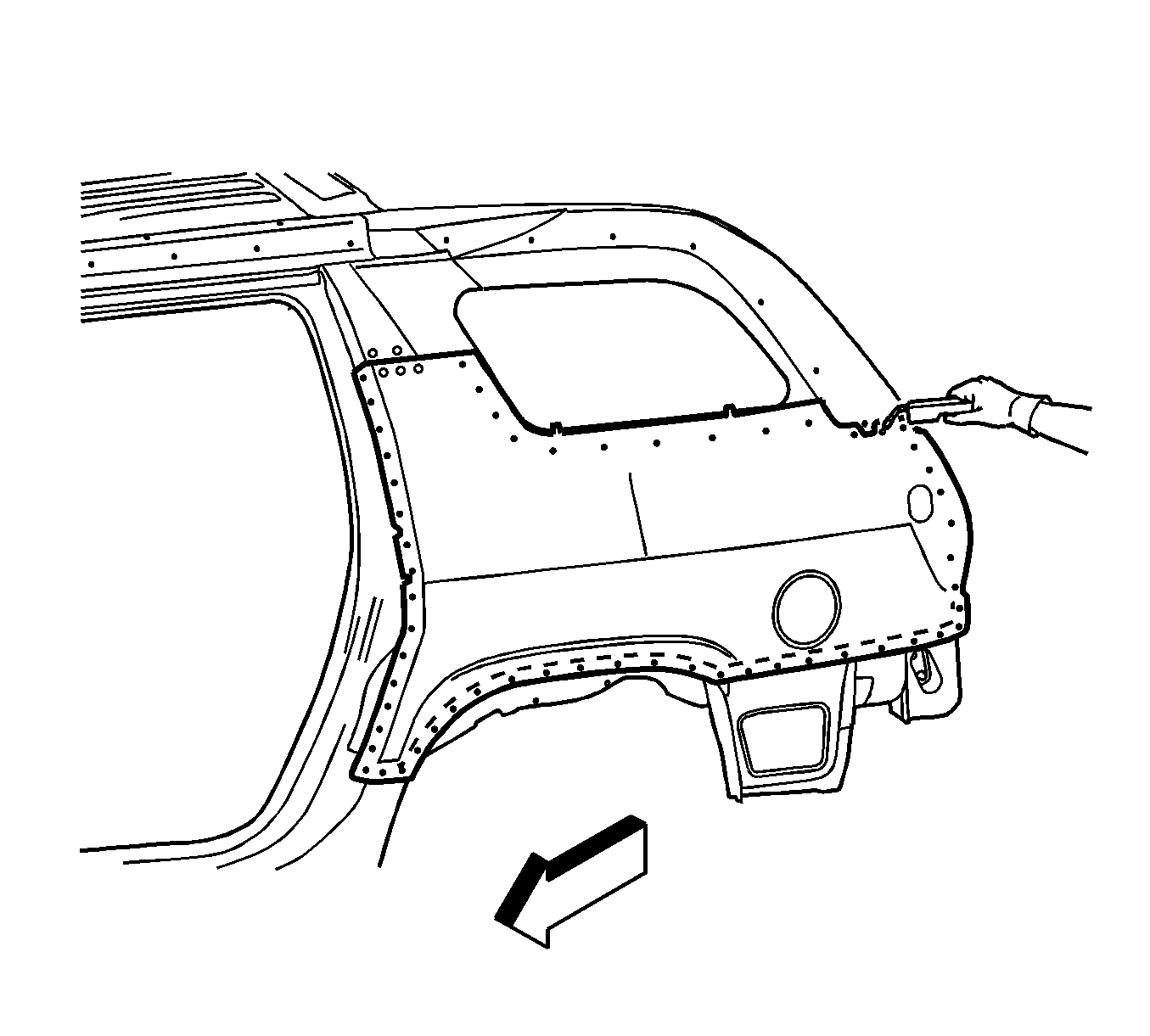
- Plug weld accordingly.
Caution: Properly seal the fuel filler opening before you position the quarter
panel. Failure to seal the opening could allow exhaust gas to leak into the
interior of the vehicle, causing personal injury.
- To create a solid weld with minimum heat distortion, make 25 mm
(1 in) stitch welds along the seam with 25 mm (1 in) gaps between
them. Then go back and complete the stitch weld.
- Clean and prepare all of the welded surfaces.
- Apply the following products, as necessary:
| • | The sound deadening materials |
| • | An approved anti-corrosion primer |
| • | The sealers and refinish as necessary |
- Install all of the related panels and components.
Quarter Outer Panel Sectioning TrailBlazer, Envoy
Removal Procedure
Caution: Refer to Approved Equipment for Collision Repair Caution in the Preface section.

- Remove all related panels and components including the lower quarter filler.
- Restore as much of the damage as possible to the factory specifications.
- Note the location and remove the following materials, as necessary:
| • | The anti-corrosion materials |

Important: Do not damage any of the inner panels or the reinforcements.
- Cut the panel where sectioning is to be performed.
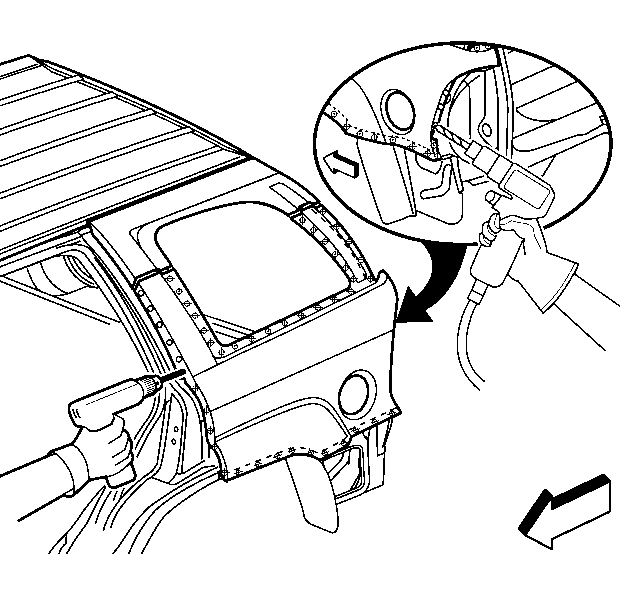
- Locate, and drill out all of the factory welds. Note the number and location of the welds for the installation of the service part.
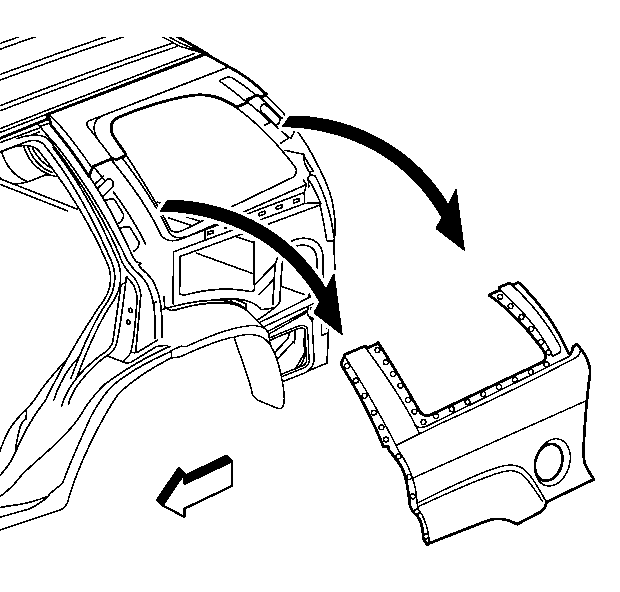
- Remove the damaged quarter panel.
Installation Procedure
The quarter panel may be serviced as a complete panel in the event the roof panel is to be replaced. Sectioning procedures have been developed to simplify the repair. The service part can be replaced by making sectioning cuts at the window pillars.
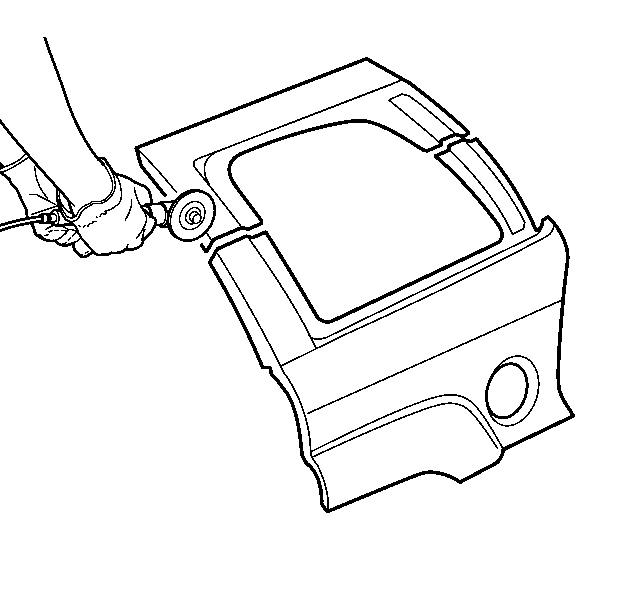
- Cut the replacement quarter panel in corresponding locations to fit the remaining original panel. The sectioning joint should be
trimmed to allow 1.5 times the metal thickness at the sectioning joint.

- Create a 50 mm (2 in) (a) backing plate from the unused portion of the service part. Trim the backing plate
as necessary to fit behind the sectioning joint.
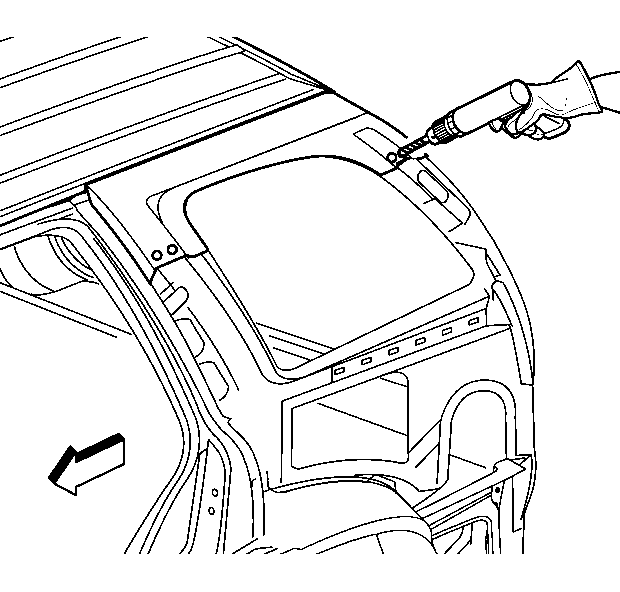
- Drill 8 mm (0.3 in) plug weld holes along the sectioning cut on the remaining original part. Locate these holes 13 mm
(0.5 in) from the edge and spaced 40 mm (1.6 in) apart.

Important: In any area with excessive damage, space the plug weld holes every 40 mm (1½ in) apart.
- Drill 8 mm (0.3 in) plug weld holes in the service part as necessary in the locations noted from the original panel and along the sectioning cut.

- Prepare all of the mating surfaces as necessary.
- Apply GM-approved Weld-Thru Coating or equivalent to all mating surfaces. Refer to
Anti-Corrosion Treatment and Repair
.
- Fit the backing plate halfway into the sectioning joint, clamp and plug weld to the vehicle.
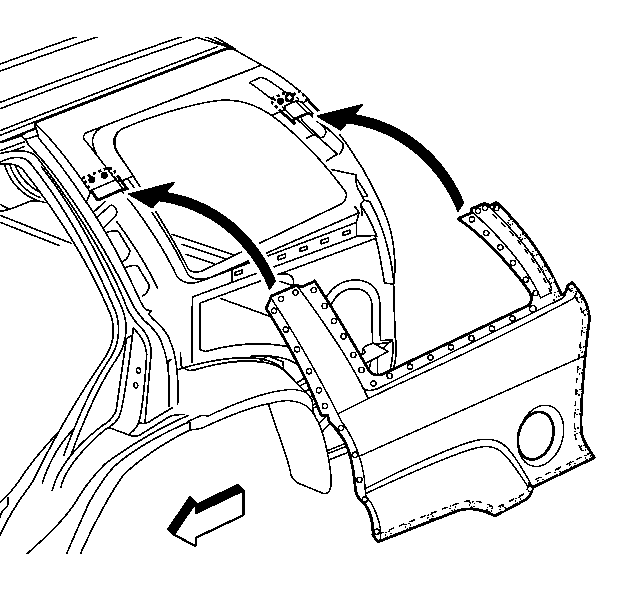
- Position the quarter panel to the vehicle.
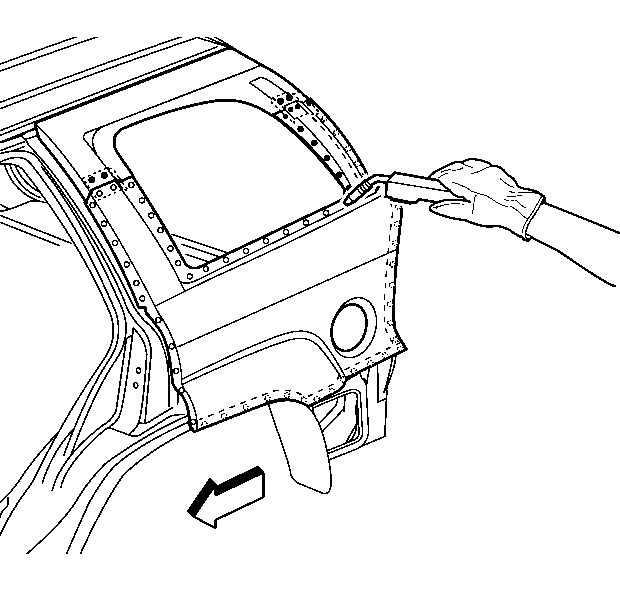
- Plug weld accordingly.
Caution: Properly seal the fuel filler opening before you position the quarter
panel. Failure to seal the opening could allow exhaust gas to leak into the
interior of the vehicle, causing personal injury.
- To create a solid weld with minimum heat distortion, make 25 mm (1 in) stitch welds along the seam with 25 mm (1 in) gaps between them. Then go back and complete the stitch weld.
- Clean and prepare all of the welded surfaces.
- Apply the following products, as necessary:
| • | The sound deadening materials |
| • | An approved anti-corrosion primer |
| • | The sealers and refinish as necessary |
- Install all of the related panels and components.






















